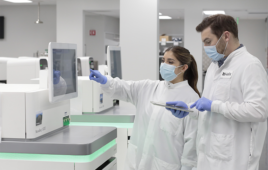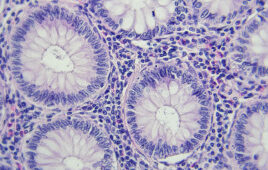Heart disease is the number one killer in the world and India carries more than its share of this burden. Moreover, the problem is set to rise: it is predicted that by 2010 India’s population will suffer approximately 60% of the world’s heart disease. Today, an international team of 25 scientists from four countries provides a clue to why this is so: 1% of the world’s population carries a mutation almost guaranteed to lead to heart problems and most of these come from the Indian subcontinent, where the mutation reaches a frequency of 4%.
Heart disease has many causes; some carried in our genes and others linked to our lifestyle, but all seemingly complex, hard to pin down, and incompletely understood. A new study published in Nature Genetics is striking for the size and simplicity of the effect it reports.
The mutation, a deletion of 25 letters of genetic code from the heart protein gene MYBPC3, is virtually restricted to people from the Indian subcontinent. But there, Caste and Tribe, Hindu, Muslim, Sikh, Christian, and others are all united by this affliction.
The mutation was discovered five years ago in two Indian families with cardiomyopathy, but its significance only became apparent after almost 1500 people from many parts of India, some with heart disease and some without, were studied.
Scientists express this genetic risk as an odds ratio, where 1.2 would be a small effect and 2.0 a large one. For the MYBPC3 mutation, the odds ratio is almost off-scale, a staggering 7.0. Carriers usually show few symptoms until middle age, but after that age most are symptomatic and suffer from a range of effects, at worst sudden cardiac death.
‘The mutation leads to the formation of an abnormal protein,’ explained the study leader, Kumarasamy Thangaraj from the Centre for Cellular and Molecular Biology, Hyderabad, India. ‘Young people can degrade the abnormal protein and remain healthy, but as they get older it builds up and eventually results in the symptoms we see.’
The combination of such a large risk with such a high frequency is, fortunately, unique. ‘How can such a harmful mutation be so common?’ asks Chris Tyler-Smith from The Wellcome Trust Sanger Institute, Hinxton, UK. ‘We might expect such a deleterious change to have died out.’
‘We think that the mutation arose around 30,000 years ago in India, and has been able to spread because its effects usually develop only after people have had their children. A case of chance genetic drift: simply terribly bad luck for the carriers.’
‘The bad news is that many of these mutation carriers have no warning that they are in danger,’ said Perundurai S. Dhandapany from Madurai Kamaraj University, Madurai, India, ‘but the good news is that we now know the impact of this mutation.’
The lifetime risk of developing heart failure is roughly one in five for a person aged 40 years. Now that this mutation has been identified, there is a new glimmer of hope for some of them. The mutation’s effects vary a lot from person to person. Carriers could be identified at a young age by genetic screening and adopt a healthier lifestyle.
‘This is a genetic finding of great importance,’ said Sir Mark Walport, Director of the Wellcome Trust. ‘Heart disease is one of the world’s leading killers, but now that researchers have identified this common mutation, carried by one in 25 people of Indian origin, we have hope of reducing the burden that the disease causes. This research should lead to better screening to identify those at risk and may ultimately allow the development of new treatments.’
And perhaps eventually new drugs could be developed to enhance the degradation of the abnormal protein and postpone the onset of symptoms. There is a market of 60 million people waiting.
Release Date: January 18, 2009
Source: Wellcome Trust Sanger Institute
Filed Under: Genomics/Proteomics




